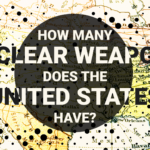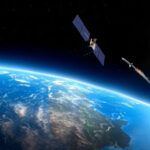Pyongyang, PyeongChang, and the limits of Olympic diplomacy
By Duyeon Kim | February 6, 2018

After a year of rapid nuclear advancements and provoking the rest of the world with threatening words and actions, North Korea is waging a predictable peace offensive, using the upcoming Winter Olympics in South Korea as a key tactic. North Korean Leader Kim Jong-un’s charm campaign began with his New Year’s address on January 1st, in which he adopted a conciliatory tone and expressed a desire for better relations with the South. The message has continued with cross-border visits and plans for the North to participate in the Winter Games.
It may be tempting to read hope into these gestures. After all, conciliatory words are preferable to volatile bluster, and diplomacy can create opportunities. However, the North Korean regime’s overtures, though they may sound peaceful, should be viewed with great caution. After the Olympic Games, which run from February 9-25, it will certainly be possible to turn this moment of sports diplomacy into something more durable. But North Korea remains a nuclear state and shows no signs of disarming. Its latest olive branch is just a familiar move in an old game, one that will present the leaders of South Korea, the United States, and China with tough choices in the months ahead. The wrong steps could weaken the US-South Korea alliance, further exacerbate the North Korean nuclear threat, and convince hardliners in the White House to opt for military action. The Washington-Seoul alliance is strong, but close coordination and communication are now particularly crucial to prevent playing into Pyongyang’s hands, and to keep the North engaged in a diplomatic process that lasts beyond the Winter Olympics.
Pyongyang’s rationale. North Korea is notorious for waging peace offensives after tensions. This latest campaign has several goals: to drive a wedge between Washington and Seoul, divide South Koreans, weaken the international campaign of sanctions and diplomatic pressure against Pyongyang, and give North Korea an image makeover at a major international event by creating the illusion of a normal and peaceful country.
Kim’s New Year’s speech—a guide to understanding his country’s behavior since then—was immediately followed by a flurry of conciliatory activities on the Peninsula. The two Koreas engaged in dialogue for the first time in two years and the first time since the South elected a new, progressive president last May. Government ministers of the two countries concluded a rare, speedy agreement in early January on a work plan for the North’s participation at the PyeongChang Winter Olympics. They decided their teams would march together at the opening ceremony, and to field a joint women’s ice hockey team. Advance teams from both sides have been crossing the border to prepare for the festivities. The two sides are focusing heavily on atmospherics, which are indeed important in diplomacy, but must lead to meaningful results.
Seoul’s vision is to broker US-North Korea nuclear talks via inter-Korean engagement and the Olympics. And to be sure, giving diplomacy a chance, risks and all, is preferable to last year’s dangerously volatile situation. But Kim’s peace “offerings” to South Korea come after a decade of tension and escalation. An understanding of North Korean tactics and objectives, progressive South Korean thinking, and historical precedent suggest more cause for skepticism about this process than starry-eyed hopes for genuine peace.
Fundamentally, prospects for a shift in Pyongyang’s nuclear calculus are nowhere in sight. Its focus this year appears to be on increasing the number of nuclear weapons in its arsenal, technological refinement, and missile deployment. In his New Year’s speech, Kim said he ordered his nuclear establishment to mass produce and deploy nuclear warheads and ballistic missiles—Pyongyang calls them ballistic “rockets”—claiming their “power and credibility are already guaranteed.” He also asserted that he now has “power and a reliable war deterrent,” and went out of his way to stress that the “nuclear button” on his desk is “the reality,” though he also toned down the rhetoric by saying it is “not a threat.”
Also troublesome is the ambiguous red line Kim Jong-un has drawn for nuclear use: Violating his country’s “sovereignty and interests,” he says, will lead to a nuclear response. Nuclear states typically adopt a policy of only using nuclear weapons if they or their allies are under imminent nuclear attack. But the North has set wide parameters, opening the door to potentially using nuclear weapons based on miscalculation or simply any excuse.
A message for Southern ears. New Year’s addresses by Kim dynasty leaders are meaningful because they provide clues—some explicit and others nuanced—to their plans for domestic and foreign policy. The speeches are typically aimed at three audiences, each with a different message: North Koreans, South Koreans, and the US or international community.
In this year’s address, Kim Jong-un expressed flexibility toward the South but maintained a tough stance toward the United States. He said, basically, that Pyongyang will talk graciously to Seoul as a big-hearted brother, but speak to Washington only on its own terms, with nuclear weapons in hand. A North Korean leader expresses his desire to improve cross-border relations virtually every year, but Kim’s words were notable this time because of what he knows about South Korean President Moon Jae-in: Moon has been eager to resume dialogue and have the North participate in the Winter Olympics, wants inter-Korean reconciliation to be his political legacy, and is lenient toward the North compared to his country’s conservatives. Kim offered, in his speech, to send a team to the Olympics; his cue to do so may have been getting word in December that Moon and US President Donald Trump were willing to postpone joint military exercises until after the Games.
Pyongyang’s attempted North-South reset is focused on forcing South Korea to accept the North’s nuclear-armed status—Seoul was banned from uttering the word “denuclearization” during January’s high-level inter-Korean talks—and trying to reduce military tensions by together warding off American influence. Kim’s peaceful rhetoric and nationalistic appeals for a united front among “our (Korean) people” against big powers resonates among certain progressives in the South. By stirring up emotions in the South and emphasizing “compatriots of the same blood,” Pyongyang’s peace offensive is a ploy to pull Seoul further away from the “imperial” United States, weaken sanctions, make it more difficult for Washington to take military action, and cause a rift between South Korean progressives and conservatives to advance the regime’s cause. Kim has called all Koreans around the world to rally around North Korea’s flag in his “revolution” against American power in the region. It will be critical for Seoul to keep Washington informed about its intentions and goals every step of the way and coordinate intimately with its closest ally in the weeks and months to come.
Peace Olympics or Pyongyang Olympics? South Korea aims to turn the PyeongChang Olympics into the “Peace Olympics” that eventually lead to denuclearization. In Seoul’s view, the Games could reduce tensions and create a window for resuming inter-Korean projects, with an eye to holding a North-South summit soon and eventually riding the peace momentum all the way to US-North Korea nuclear talks. Moon will be sitting down with other countries’ senior government officials during the Winter Games. North Korea’s decision to send its ceremonial head of state, Kim Young Nam, to PyeongChang as chief delegate has raised hopes within the South Korean government that the North is determined to improve cross-border relations. Seoul has long strived for such a top-level inter-Korean meeting at PyeongChang. It might also try to broker a face-to-face meeting between the North’s Kim Yong Nam and US Vice President Mike Pence, even on an informal level.
But Seoul has encountered an unexpected challenge domestically, complicating its diplomatic efforts. Many South Koreans blame their government for losing sight of the Olympics’ real purpose by essentially allowing Pyongyang to dictate the terms of its participation. Moon’s approval rating dropped for the first time since he took office over Seoul’s last-minute decision to form a joint women’s ice hockey team, disrupting years of teamwork and tireless training by the South Korean team. The 20- and 30-somethings who mostly voted for Moon are particularly outraged, and not due to political ideology. They criticized Seoul’s unfair treatment of the players and unwavering decision despite petitions opposing a unified team. Members of this younger generation—who prioritize individual economic prosperity over unification—are sensitive to fairness and repulsed by what they see as unilateral power-wielding by anyone. Their anger was further fueled when the prime minister remarked that the South Korean team was not originally a medal contender, and a presidential official said, “We didn’t know it would be such a sensitive issue…but we really want this, so the public will understand.”
North Korea, for its part, is aiming to pursue peaceful inter-Korean reconciliation while conducting business as usual as a nuclear power. It is reportedly preparing a massive military parade for the eve of the PyeongChang Olympics, and has issued new postal stamps featuring an inter-continental ballistic missile (ICBM). Pyongyang ultimately wants to use the Winter Games to further entice Seoul into its orbit and indefinitely halt US-South Korean joint military exercises while extracting economic and financial concessions.
Pyongyang is already getting at least some of what it wants: Seoul has lifted some unilateral sanctions, and requested an exemption from the United Nations to logistically enable Pyongyang’s attendance and participation in joint training sessions. Absent new provocations, Pyongyang’s engagement with Seoul after the Olympics could make it difficult for Washington to introduce more sanctions or seriously contemplate military action against the North.
The Winter Olympics serve another purpose for Pyongyang: They are a major public relations opportunity on a global scale, such that even if dialogue breaks down afterwards, Pyongyang will walk away a winner. Historically, North Korea has chosen to disrupt major sporting events hosted in the South. In 1987 it blew up Korean Air Flight 858 with a goal of scaring athletes and fans away from the 1988 Seoul Summer Olympics, and in 2002, it provoked a skirmish in the West Sea (or Yellow Sea) during the World Cup soccer tournament co-hosted by Seoul and Tokyo.
This time, under a Kim Jong-un who is more image-conscious than his predecessors, North Korea wants a drastically different kind of spotlight: to be perceived as a normal, modern, peace-loving nuclear power. The North is also posturing to turn the PyeongChang Olympics into the “Pyongyang Olympics.” Knowing it will receive extensive coverage by global media with its extravagant arts performances and an unusually large delegation, the regime aims to hijack the limelight from the real stars of an international sporting event. The kind of attention it will command was foreshadowed in January, when the media extensively covered a preparatory visit to the South by North Korean singer Hyon Song Wol, head of her country’s state art troupe and a political emissary. The Rodong Shinmun, the North Korean Workers’ Party’s newspaper, ran a large photo of Hyon on the steps of a bus, looking down on a sea of South Korean photographers like a goddess, an apparent attempt to portray the North’s superiority over the South.
With these sorts of intentions in mind, it will be important for Seoul to prescreen North Korean lyrics and performances to ensure they do not include regime propaganda or provocative messages, which are commonly veiled in metaphor and nuance.
Delicate waters ahead. The moment of truth will arrive after the Winter Games, when the United States and South Korea resume their joint military exercises. Will Moon try to convince Trump to postpone the drills until August, to extend the rapprochement with the North? When exercises do eventually resume, how will Pyongyang react?
The likely scenario is that if joint exercises continue, the North will walk away from diplomacy and do something provocative, resulting in intensified pressure from Washington and a repeat of last year’s escalation. Pyongyang is already laying the groundwork to later justify such an action by saying, via Rodong Shinmun, that Seoul’s military alliance with the United States could end momentum for inter-Korean dialogue.
For decades, Pyongyang has demanded that the United States and North Korea halt joint military exercises, but the drills were hardly deal breakers in the past. From 2000 to 2008, inter-Korean talks and the Six Party Talks took recesses during the drills and resumed afterwards without much fuss. But several factors might be contributing to the North’s recent push to halt the drills and indefinitely rid the peninsula of US troops. Pyongyang knows that the progressive Moon administration is more inclined to accept such demands than his conservative political opponents. It is also taking advantage of the push—by China and others—for a so-called “freeze for freeze” deal, in which North Korea halts nuclear-missile activity and testing while the US halts joint military exercises with South Korea. There is a growing chorus even in the American policy community for such a disproportionate bargain, a fact Kim is well aware of. More fundamentally, rumor has it that the North has almost depleted the resources and reserves it would need to mobilize its military in response to US-South Korean drills.
Trump’s hard choices will arrive when Pyongyang is ready to negotiate. By that point, the regime may have already perfected reliable, nuclear-tipped ICBMs. The White House is applying the most comprehensive sanctions against Pyongyang in 25 years to try to bring it to the negotiating table. Washington will need to formulate a plan soon, with Seoul, for the day Pyongyang is ready to make a deal.
But the ultimate moment of truth will come when Trump realizes complete denuclearization will not happen quickly or easily. At that point, he will have to decide whether to deal with the North using Cold War-style containment or military force. If Trump’s State of the Union address last week is any guide, then the latter appears likely. The president’s remarks on North Korea sounded eerily similar to former President George W. Bush’s 2002 “axis of evil” speech essentially selling the Iraq War. Without any mention of diplomacy—the other current pillar of Washington’s North Korea policy—Trump seemed to be building a moral case by manipulating the plight of the North Korean people to demonize the North and justify future military action.
Any US military strike on the North would compel Pyongyang to retaliate, which would quickly escalate into full-blown conflict. All wars are devastating, but marching into war with a young nuclear-armed state would be a serious mistake with catastrophic consequences not only for American allies in Northeast Asia, but also for Americans and the rest of the world. Hard-nosed diplomacy backed by credible pressure minus any military strike may not guarantee a quick fix, but it is the smart choice.
Together, we make the world safer.
The Bulletin elevates expert voices above the noise. But as an independent nonprofit organization, our operations depend on the support of readers like you. Help us continue to deliver quality journalism that holds leaders accountable. Your support of our work at any level is important. In return, we promise our coverage will be understandable, influential, vigilant, solution-oriented, and fair-minded. Together we can make a difference.
Topics: Columnists, Nuclear Weapons















